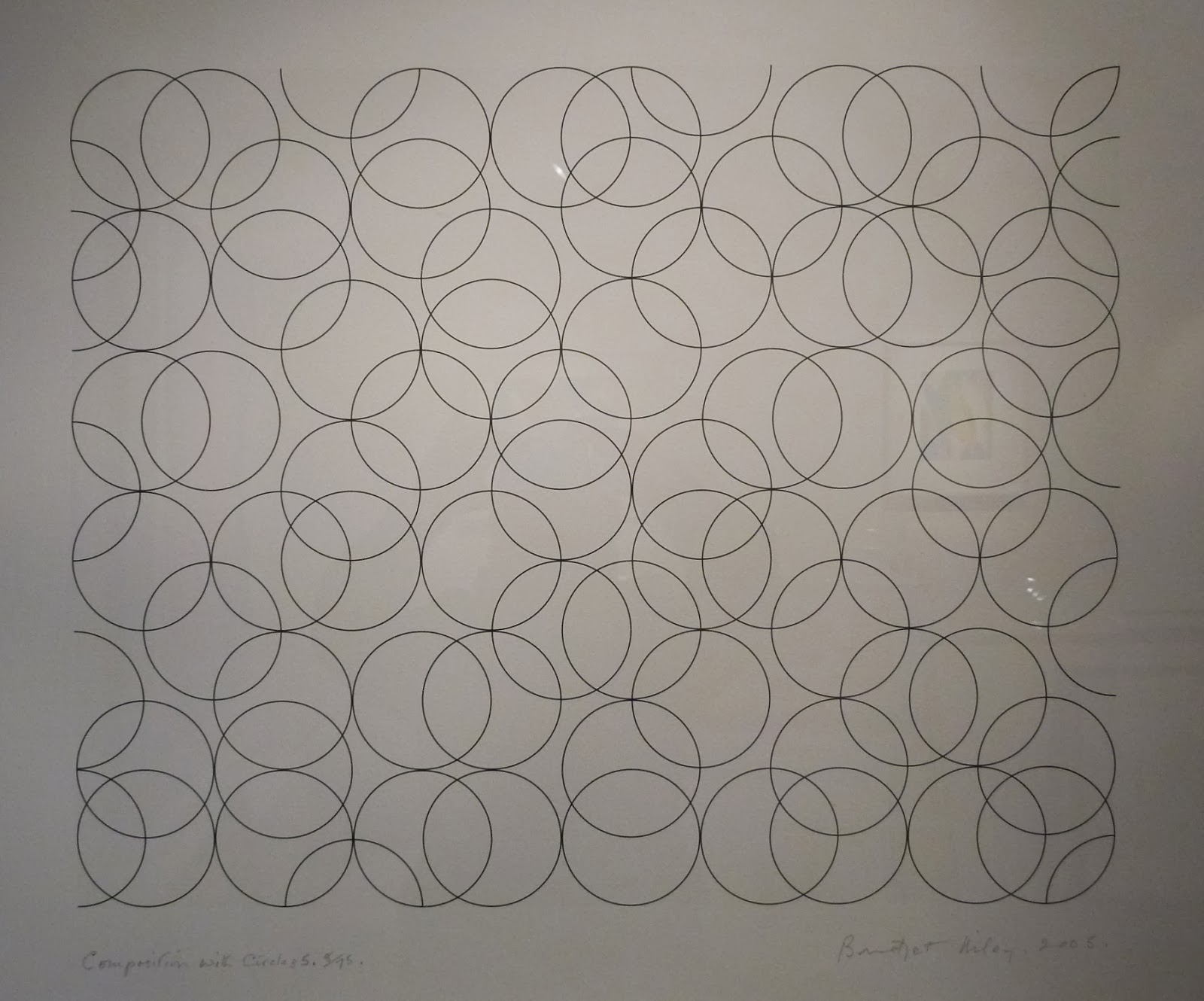Bridget Riley at the White Room Gallery, Leamington Spa.
Famous as an early proponent of Op Art, Riley flirted with pointillism before discovering her own method of treating optics in paint. Around 1960 she began to develop her own style consisting of black and white geometric patterns that produce sensation of movement, explore the dynamism of sight and produce a disorienting effect on the eye. Some viewers have said that her works induce a sensation of being seasick or that of sky diving. The sensations you experience as you look at one of her paintings change as you look, generating what Riley calls 'a stimulating, an active, a vibrating pleasure'. It is furthermore difficult to fail to observe that in her writing and interviews Riley likes the word 'sensation' better than 'perception'.
Visually, her works relate to many concerns of that period: a perceived need for audience participation, the Happenings, CND marches, student protests - Riley pulled this energy and activity back on to the surface of the canvas, creating paintings that were themselves Happenings; challenges to the notion of the mind-body duality which led Aldous Huxley amongst others, to experiment with hallucinogenic drugs; concerns with a tension between a scientific future which might be very beneficial or might lead to a nuclear war; and fears about the loss of genuine individual experience in a Brave New World.
Riley began investigating colour in 1967 when she produced her first stripe paintings.
'For me, drawing is an inquiry, a way of finding out - the first thing that I discover is that I do not know. This is alarming even to the point of momentary panic. Only experience reassures me that this encounter with my own ignorance - with the unknown - is my chosen and particular task, and provided I can make the required effort the rewards may reach the unimaginable'.
'You cannot deal with thought directly outside practice as a painter: 'doing' is essential in order to find out what form your thought takes'.
Apologies for the poor quality of the photographs, not just the reflections and the lights, but of my shadow too.
Magenta and Blue
Magenta and Yellow
Magenta and Green
And About
Fold
Large Fragment
Composition with Circles 5, 2003
Untitled (La Lune en Rodage - Carlo Belloli)
Untitled (Elongated Triangles 5)
Untitled (Elongated Triangles 2)










Ah yes, she is one of my favourites. I love the questions she asks of perception - and on a completely mundane personal level I so admire her for sticking to her art first and only, rather than engaging with marriage and family.
ReplyDeleteYes, they're lovely, Olga. And I agree with you about the way she talks about her art and perception. On the personal front, I did not know this - I don't know anything about her personal life. And of course, what is so sad and a real reflection of our society is that we would not need to say that about a man - men are able to have both.
ReplyDelete